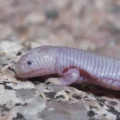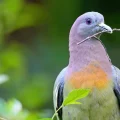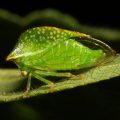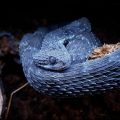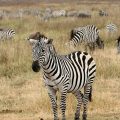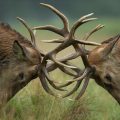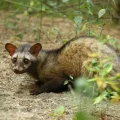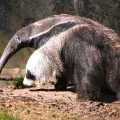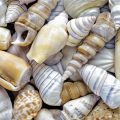The ocean is a vast and mysterious place, filled with a seemingly infinite variety of life. But what isn’t always so obvious is the intricate food chain that exists beneath the surface. From tiny plankton to apex predators like killer whales, each species has its place in the complex network of life in the ocean.
At the base of the food chain are microscopic organisms known as phytoplankton. These tiny organisms are photosynthetic, meaning they convert light energy into chemical energy through photosynthesis. This process is essential to life in the ocean, as it forms the basis for all other life forms in the ecosystem.
The next level up on the food chain are zooplankton and other small organisms that feed on phytoplankton or other small prey. Zooplankton can include animals such as copepods, krill, and other crustaceans. These organisms provide an important source of nutrition for larger fish and other predators further up the food chain.
The third level consists of larger fish, jellyfish, and crustaceans that feed on both phytoplankton and smaller prey such as zooplankton. This level also includes larger predatory fish such as sharks, squid, and dolphins which feed on these smaller creatures.
Finally at the top of this vast food chain sits apex predators like killer whales. These animals have no natural predators, so they hunt in packs much like wolves at the top of their own food chains on land. The killer whales prey upon large fish and other marine mammals for sustenance.
In conclusion, it is clear that there is an intricate network of life beneath waves of our oceans which plays an important role in sustaining our planet’s delicate balance btween sea and land-based ecosystems. Understanding how this fragile system works can help us protect our oceans with greater precision and care for many years to come!
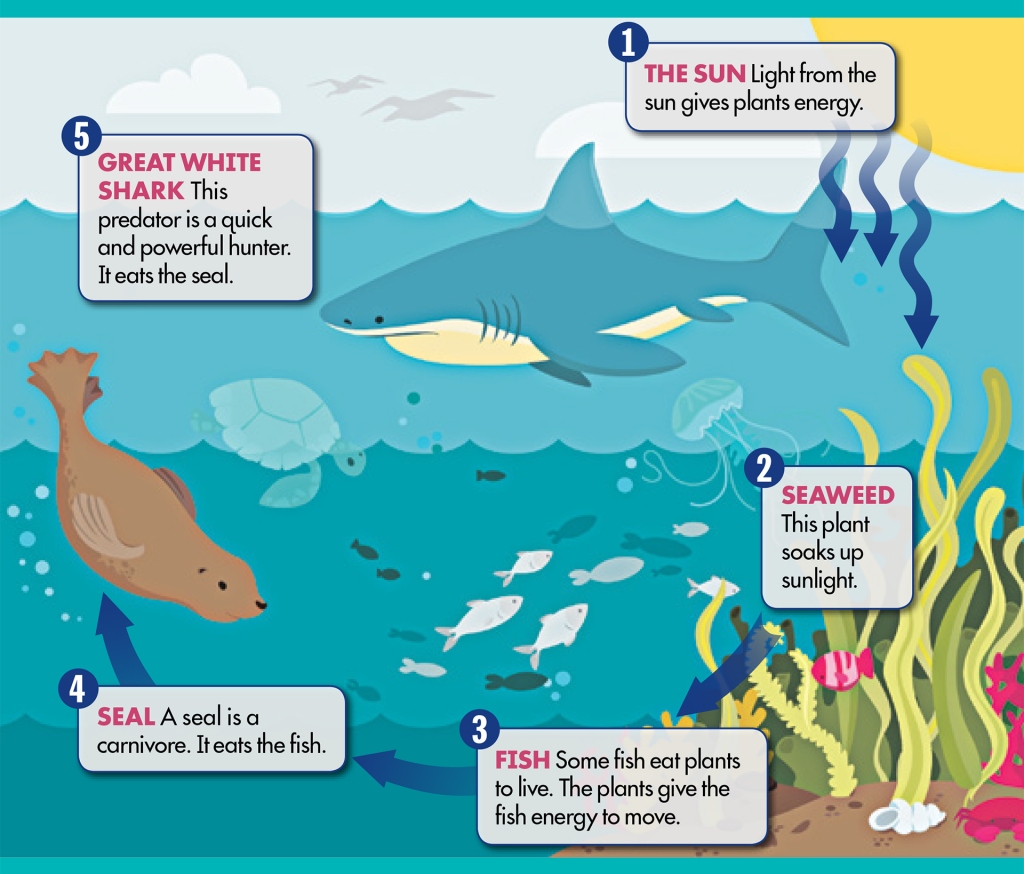
The Food Chain of an Ocean
The ocean food chain is a complex and interconnected relationship of organisms that depend on each oher for sustenance. At the base of the food chain are photosynthetic organisms such as phytoplankton, which use sunlight to produce energy. These primary producers provide energy for zooplankton, small aquatic animals that feed on phytoplankton. Zooplankton are preyed upon by carnivorous fish, jellyfish, and crustaceans, which in turn become food for larger predators such as sharks and dolphins. Higher-level predators such as whales and sea birds feed on these smaller predators. At the top of the food chain are apex predators such as killer whales and great white sharks, which have no natural predator in their environment. Finally, detritivores such as sea cucumbers consume dead organic matter from organisms lower down in the food chain.
Types of Food Chains in the Ocean
1. The Planktonic Food Chain: This food chain starts with microscopic plankton, such as phytoplankton, which use photosynthesis to convert light energy into chemical energy. These plankton are then consumed by small animals, such as krill and copepods, which are in turn eaten by larger fishes, squid, and whales.
2. The Benthic Food Chain: This food chain begins with decomposing organic matter at the bottom of the ocean floor that is then consumed by benthic organisms such as clams and worms. These organisms are in turn eaten by crustaceans, fish, and seabirds.
3. The Predator-Prey Food Chain: This food chain is composed of predators that hunt othr animals for food. Predators can range from large sharks to smaller fishes to even jellyfish that feed on zooplankton. These predators are in turn eaten by even larger predators such as seals and sea lions or even birds of prey.
The Ocean Food Chain: How Does it Work?
The ocean food chain is a complex network of organisms that transfer energy from one species to another. At the base of the food chain are primary producers, such as plankton, algae, and seaweed. These organisms use sunlight to create energy in the form of carbohydrates and oxygen through photosynthesis. This energy is then passed up the food chain to primary consumers, such as crabs and shrimp, who feed on the primary producers. Secondary consumers, such as dolphins and sharks, feed on the primary consumers and gain energy from them. The apex predators at the top of this food chain are fish that feed on both primary and secondary consumers.
All of the organisms in an ocean food chain depend on each oher for survival. As one organism dies off or becomes scarce due to environmental changes or overfishing, it can have a ripple effect throughout the entire ecosystem by reducing available energy sources for other species further down the food chain. It’s important to remember that even small changes can have dramatic impacts on an ocean environment’s delicate balance of life.
Example of an Aquatic Food Chain
An aquatic food chain is a sequence of organisms that are linked together through the transfer of energy, which occurs when one organism consumes another. An example of an aquatic food chain would be a small fish eating an aquatic insect, followed by a larger fish eating the small fish. In this case, energy is transferred from the insect to the smaller fish and then to the larger fish. This process is known as trophic transfer, and it forms the basis of all food webs in aquatic ecosystems.
The King of the Ocean: Which Animal Reigns Supreme?
The title of ‘king of the ocean’ is difficult to determine, as there are a variety of powerful marine predators which inhabit the ocean. However, it is generally accepted that the killer whale (Orcinus orca) is one of the most impressive and powerful creatures living in our oceans. Killer whales are among the world’s largest apex predators and can reach up to nine metres in length and weigh up to six tonnes. They have a diverse diet which includes fish, dolphins, sea birds, squid, seals and even large marine mammals such as whales.
The top of the food chain in the ocean is the killer whale. Killer whales, which are also known as orcas, are apex predators, meaning that they have no natural predators in thir environment. They are highly intelligent and hunt in packs, much like wolves on land. They feed on a variety of prey, including fish, squid, birds, and even other marine mammals such as seals and sea lions. Killer whales are powerful hunters and extremely successful at locating their prey due to their acute senses and advanced communication skills. As apex predators, they have no natural enemies in their environment and remain the undisputed rulers of the sea.
Killer whales have a complex social structure and live in tightly knit family groups known as pods. They use echolocation to find their prey and can cooperate with oter pods to hunt larger animals such as whales. Killer whales are also highly intelligent animals, with some exhibiting signs of problem-solving behaviour and showing an understanding of human language.
The sheer power and intelligence of killer whales makes them stand out from other marine mammals and has earned them the title of ‘king of ocean’. Despite this, white sharks (Carcharodon carcharias) should also be respected for their size, strength and hunting prowess in their own right. Ultimately though, it is the killer whale which reigns supreme as the king of ocean.
What Preys on Sharks in a Food Chain?
In a food chain, sharks can be eaten by a variety of animals, depending on the species. Some of the apex predators that feed on sharks include killer whales (or orcas), large bony fish such as tuna and marlin, seals, sea lions, and even other larger sharks. Orcas are particularly adept at hunting sharks – they can use their speed and agility to separate a shark from its school and then attack it with coordinated moves. Other animals may also scavenge on dead or dying sharks.
Number of Food Chains
There are two main types of food chains: the grazing food chain and the detrital food chain. The grazing food chain begins with autotrophs, such as plants and algae, which use energy from the sun to produce thir own food. These organisms are then eaten by primary consumers, such as herbivores, which are in turn consumed by secondary consumers, such as carnivores. This type of food chain is common in most terrestrial and aquatic ecosystems.
The detrital food chain also consists of several links but starts with dead organic matter instead of living autotrophs. This dead matter can come from a variety of sources, such as animals or leaves that have fallen onto the ground. Bacteria and fungi then break down this matter into simpler substances that can be used by other organisms, like small invertebrates. These organisms then provide the energy to support larger organisms in the food chain including predators and scavengers which ultimately return nutrients back to the soil.
Therefore, there are two main types of food chains: the grazing food chain and the detrital food chain. Both types play an important role in maintaining healthy ecosystems by transferring energy between different parts of an environment.
Order of the Food Chain
The food chain order is a sequence of organisms that describes how energy and nutrients move through an ecosystem. It begins with the sun (or light energy) as the primary source of energy, whih is then converted by primary producers into usable energy that can be consumed by other organisms. Primary consumers, such as herbivores, are then able to consume this energy and nutrients from the primary producers. Secondary consumers, such as carnivores, are then able to feed on the primary consumers, while tertiary consumers, such as apex predators, feed on both primary and secondary consumers. In this way, energy and nutrients cycle through the food chain from one organism to the next.
Conclusion
In conclusion, the ocean is a vast and dynamic ecosystem, full of life and complexity. It contains a variety of species that form an interconnected food chain from the microscopic phytoplankton to the apex predator, the killer whale. The ocean plays a vital role in the Earth’s climate by regulating temperatures and providing oxygen to the atmosphere. It is home to many valuable resources, including food sources and energy sources. As we continue to learn more about the ocean and its inhabitants, it is important that we protect this invaluable resource for generations to come.

